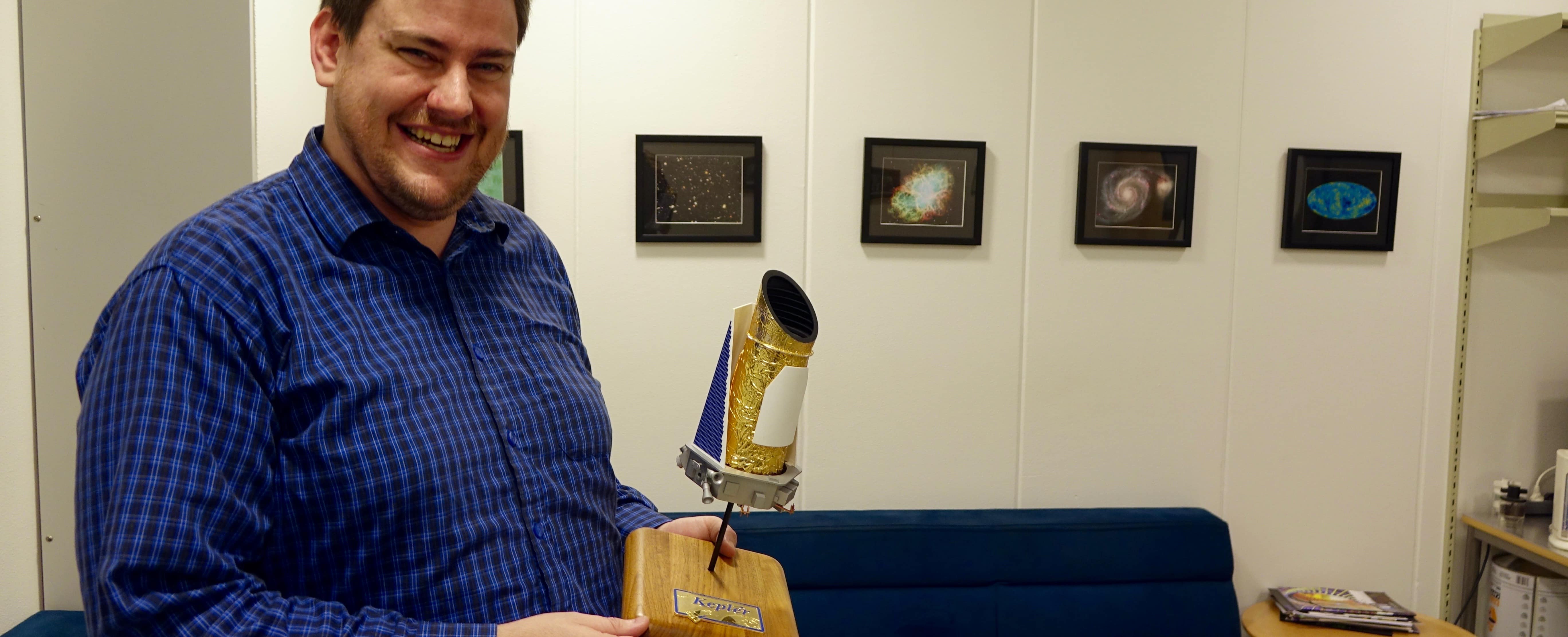
Saving the stars for the future
In 2009, NASA launched the Kepler space observatory to discover Earth-size planets orbiting other stars. For four and a half years, Kepler photographed a small 10-by-10 degrees section of the sky, taking snapshots each minute.
“This is a goldmine of data, and we won’t see anything quite like it in the foreseeable future,” explains Rasmus Handberg from the Stellar Astrophysics Centre at Aarhus University, Denmark.
4000 identified
“Among the hundreds of thousands of stars observed by Kepler, until now about 4000 have been identified as harbouring at least one planet. But there is still so much more to investigate.”
Compared to NASA, Rasmus Handberg and his fellow scientists at Aarhus University are only a very small group of people. However, being asteroseismologists, they have unique skills crucial to NASA in its effort to point out Earth-size planets among the many stars observed by Kepler. Asteroseismologists are experts in studying the inside of stars. By analyzing the soundwaves going around inside stars, manifested in tiny changes in the stars brightness, an asteroseismologist can calculate their sizes. Size is important: only planets of approximately the size of Earth and with a firm surface are potentially habitable.
“Because of our expertise in calculating the size of stars NASA has granted us full access to all data produced by Kepler,” Rasmus Handberg explains.
Dedicated data centre
“And through the international Kepler Asteroseismic Science Consortium based here in Aarhus, we provide access to this enormous data set to the world’s 600+ asteroseismologists. We have built a dedicated data centre, so that they can access this unique data through research and education networks and study the stars they have selected for further scrutiny. We are maintaining the online archive of Kepler data together with custom built web-interfaces for scientists to interact with the data.”
As the Kepler data set is so vast and so unique, there will be enough to study for everyone, and for many years to come. This means, that Rasmus Handberg and his colleagues in Aarhus have to find a way to store the data for coming generations, and that is quite a challenge.
Long time preservation
“We are now looking into long time preservation of the data. As an example, we are discussing what a future astronomer 50 years from now would need in order to understand these data. That is not an easy question to answer. And also, who has actually the capacities to reliably store 120+ TB of data on a timescale of 50 to 60 years? We are discussing this with people from Aarhus University, the Danish Royal Library, and the Danish research & education network DeiC. Our vision is to develop a dynamic and extendable “living archive” with data freely available online, so that the Kepler data will continue to be used in active research for a very long time to come.”
For more information please contact our contributor(s):

